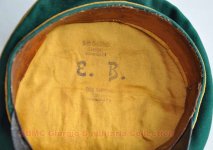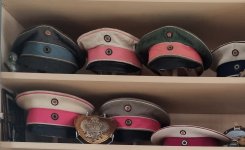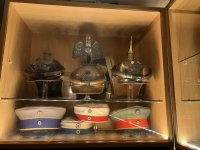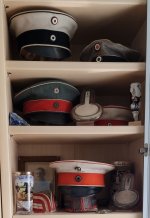Andererseits hat die enorme Kriegsmobilität die alte Friedensarmee in den Schatten gelegt - Tonnen von Feldgrüstung wurden produziert (und natürlich durch einen schrecklichen zerstörerischen Krieg gegangen, so dass es auch das gibt." "Die Vorkriegskanalrie neigt immer noch dazu, höhere Preise zu befehlen, wahrscheinlich da die Regimenten entweder einzigartig oder auf eine sehr kleine Anzahl ähnlicher Einheiten beschränkt sind, im Gegensatz zu den Infanterien oder Artillerie/technischen/Pionierregiments und können sehr knapp sein.
Und vereinbart re: HR11 - Ich denke, dass ein Großteil der Knappheit mit der Regimentalregion/Lage zu tun hat. Die schwierigsten Regiments, IMO, sind die von dem, was am Ende Ostdeutschland war oder nach dem Zweiten Weltkrieg aus Deutschland abgekleidet wurde. HR11 stammte aus Westphalia, weit außerhalb der sowjetischen Besetzung. Ich finde KR4 auch das am häufigsten vorkommte Kürassier-Regiment aus dem gleichen Grund (auch Westphalian). Und häufig als "Gardes du Corps" verkauft wurde... auch wenn ein Münster-Maker Marke ist vorhanden.

Nur meine $0,02 Theorie...




